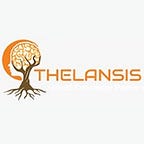Huntington Disease — Market Outlook, Epidemiology, Competitive Landscape, and Market Forecast Report — 2023 To 2033
Huntington’s disease, a rare genetic neurodegenerative condition, inflicts devastating consequences on multiple generations of affected families. Its primary hallmark is the progressive deterioration of the putamen, caudate nucleus, and cerebral cortex neurons. The selective breakdown of enkephalin-containing medium spiny neurons within the basal ganglia’s indirect pathway is responsible for the characteristic chorea. In contrast, the loss of substance-P-containing medium spiny neurons in the direct pathway leads to dystonia and akinesia. The specific regional pattern of neuronal loss in the cortex and basal ganglia among affected individuals may account for the variations in their clinical presentation. Typically, Huntington’s disease emerges between the ages of 30 and 50, with a median life expectancy of approximately 15 years following diagnosis. Although an exceptionally rare juvenile form exists, the usual onset occurs in early middle age, marked by abnormal movements, notably chorea, and psychiatric symptoms like psychosis, depression, and obsessive-compulsive disorder, often accompanied by progressive cognitive decline. As a result, Huntington’s disease is considered in the differential diagnosis of conditions involving dementia, chorea, and psychiatric disturbances. Regrettably, there is no cure for Huntington’s disease, and its course typically spans 15 to 20 years. The length of the CAG repeats indicates the symptom onset and predicts the age at which an individual may succumb to the disease. Larger CAG repeat sizes correlate with more rapid deterioration in motor, cognitive, and functional abilities. However, the progression of behavioral symptoms is not associated with CAG repeat size. Homozygous individuals with fully penetrant Huntington’s disease tend to experience a similar onset age to heterozygotes but may face a faster disease progression. Huntington’s disease carries numerous complications:
1. Individuals with dystonia and swallowing difficulties often experience accelerated complications and a shorter lifespan.
2. Chorea with larger amplitude can lead to injuries, improper positioning, fractures, and head trauma.
3. Common causes of death are complications arising from immobility, such as pneumonia, cardiac disease, or infections.
4. Tragically, 25% of patients attempt suicide.
5. Severe behavioral issues can profoundly disable individuals, causing distress to patients, their families, and caregivers.
There is no cure for Huntington’s disease (HD) that can halt or reverse its progression, and treatment options are available to alleviate some of its symptoms. Specifically, drugs like tetrabenazine, valbenazine, and deuterabenazine have effectively managed the chorea associated with HD. These medications can help reduce involuntary movements and improve the quality of life for individuals with HD.
· In the United States, the estimated prevalence of Huntington’s disease is approximately 12.7 cases per 100,000 people.
Thelansis’s “Huntington Disease Market Outlook, Epidemiology, Competitive Landscape, and Market Forecast Report — 2023 To 2033” covers disease overview, epidemiology, drug utilization, prescription share analysis, competitive landscape, clinical practice, regulatory landscape, patient share, market uptake, market forecast, and key market insights under the potential Huntington Disease treatment modalities options for eight major markets (USA, Germany, France, Italy, Spain, UK, Japan, and China).
KOLs insights of Huntington Disease across 8 MM market from the centre of Excellence/ Public/ Private hospitals participated in the study. Insights around current treatment landscape, epidemiology, clinical characteristics, future treatment paradigm, and Unmet needs.
Huntington Disease Market Forecast Patient Based Forecast Model (MS. Excel Based Automated Dashboard), which Data Inputs with sourcing, Market Event, and Product Event, Country specific Forecast Model, Market uptake and patient share uptake, Attribute Analysis, Analog Analysis, Disease burden, and pricing scenario, Summary, and Insights.
Thelansis Competitive Intelligence (CI) practice has been established based on a deep understanding of the pharma/biotech business environment to provide an optimized support system to all levels of the decision-making process. It enables business leaders in forward-thinking and proactive decision-making. Thelansis supports scientific and commercial teams in seamless CI support by creating an AI/ ML-based technology-driven platform that manages the data flow from primary and secondary sources.
Tags: Huntington Disease, Huntington Disease market outlook, Huntington Disease competitive landscape, Huntington Disease market forecast, Thelansis, Primary market research, KOL insights, Competitive Intelligence (CI)
